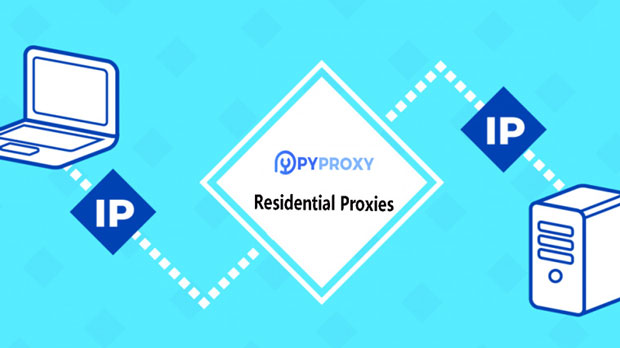How does the SOCKS5 proxy handle different types of network traffic TCP UDP?
A socks5 proxy is a versatile and powerful tool that handles network traffic by forwarding data between a client and a server. It supports a wide variety of protocols and data types, including TCP (Transmission Control Protocol) and UDP (User Datagram Protocol). While both TCP and UDP are essential for different types of internet traffic, socks5 proxies handle them in distinct ways due to their inherent differences in functionality. Understanding how SOCKS5 proxies manage these protocols is crucial for network performance, security, and optimization. In this article, we will explore how SOCKS5 proxies process TCP and UDP traffic, detailing the unique handling mechanisms for each, their implications for real-world use cases, and the advantages and challenges associated with each protocol. This in-depth analysis will provide valuable insights for anyone looking to better understand the operational mechanics of SOCKS5 proxies.Understanding SOCKS5 Proxy and Its RoleBefore diving into the specifics of TCP and UDP handling, it’s important to first understand the core functionality of the SOCKS5 proxy. SOCKS5 stands for "Socket Secure version 5," and it is the latest version of the SOCKS protocol, which serves as a versatile method of routing network traffic through a proxy server. Unlike traditional HTTP proxies, which only handle HTTP/HTTPS traffic, SOCKS5 can forward almost any type of traffic, including TCP and UDP packets. This makes it more flexible and widely applicable for a variety of networked applications, from web browsing to online gaming and VoIP.SOCKS5 proxies operate at a lower level in the OSI model, typically at the transport layer, which means they are protocol-agnostic. This allows them to tunnel different kinds of traffic securely and efficiently. The proxy acts as an intermediary between the client and the destination server, ensuring data is properly relayed without altering the content or format of the communication.TCP Traffic Handling by SOCKS5 ProxyTCP is a connection-oriented protocol that ensures reliable, ordered data transmission between two endpoints. When a SOCKS5 proxy processes TCP traffic, it follows a sequence of steps that ensures data integrity and delivery reliability. Let’s break down this process:1. Connection Establishment: TCP requires a three-way handshake to establish a connection between the client and the server. In the case of a SOCKS5 proxy, this handshake occurs between the client and the proxy server first, and then the proxy establishes its own connection with the destination server. The proxy forwards all packets in both directions, maintaining the order and reliability of the communication.2. Data Transfer: Once the connection is established, the client sends data packets to the SOCKS5 proxy, which then relays these packets to the destination server. Similarly, any responses from the destination server are passed through the proxy back to the client. The SOCKS5 proxy does not alter the content of the packets but ensures they are delivered in the correct order and without loss, respecting the connection-oriented nature of TCP.3. Connection Termination: Once the communication session is complete, the connection is terminated in the reverse order of the handshake. The SOCKS5 proxy will send a termination signal to the client and the server, completing the process.For TCP, SOCKS5 proxies are well-suited due to the protocol's demand for reliability, sequencing, and error-checking. SOCKS5’s ability to relay packets without altering the data or behavior of TCP ensures a stable and consistent connection.UDP Traffic Handling by SOCKS5 ProxyUDP, in contrast, is a connectionless protocol that does not guarantee delivery or ordering of packets. While TCP is ideal for applications where reliability is crucial (e.g., web browsing, file transfers), UDP is often preferred for real-time applications (e.g., streaming, online gaming, VoIP), where low latency and fast transmission are more important than packet reliability.Handling UDP traffic via a SOCKS5 proxy introduces some unique challenges due to the stateless nature of UDP. Here’s how SOCKS5 proxies deal with UDP traffic:1. No Connection Establishment: Unlike TCP, UDP does not require a connection setup or handshake. This means the SOCKS5 proxy does not need to establish a dedicated connection between the client and the server. Instead, it simply forwards UDP packets between the client and the destination server, without checking for packet loss or ensuring the order of delivery.2. Packet Forwarding: UDP packets are typically small and fast to transmit, making them ideal for real-time applications. The SOCKS5 proxy forwards these packets in the same way it does for TCP, but without any guarantees of reliability. Since UDP is used for applications like video streaming, voice communication, and gaming, the SOCKS5 proxy simply ensures that the packets reach the destination as quickly as possible without any additional overhead.3. Handling UDP Packets Independently: Each UDP packet is treated independently, and there is no ongoing session or connection between the proxy and the destination server. The SOCKS5 proxy simply forwards the packets on a per-packet basis. This makes UDP traffic less reliable but much faster and more suited to applications that prioritize speed and low latency over guaranteed delivery.While SOCKS5 proxies handle UDP traffic well, the lack of delivery guarantees and ordering mechanisms means that some applications might not perform optimally if packet loss occurs. However, for real-time services that can tolerate occasional packet loss, SOCKS5 remains a good choice.Advantages of SOCKS5 Proxy for TCP and UDP Traffic1. Flexibility and Protocol Support: One of the biggest advantages of SOCKS5 proxies is their ability to handle both TCP and UDP traffic without needing to adjust the proxy configuration. This makes SOCKS5 an attractive option for applications that require diverse networking protocols.2. Privacy and Security: SOCKS5 proxies can support additional security features, such as authentication, which can help protect against unauthorized access. When using SOCKS5 with either TCP or UDP, data is routed through the proxy server, making it harder for external parties to directly access the user’s IP address or track their online activities.3. Bypassing Network Restrictions: SOCKS5 proxies can help users bypass geo-restrictions, firewall rules, or censorship. By routing TCP and UDP traffic through the proxy server, users can access content that might otherwise be blocked by their local network or government restrictions.Challenges in Handling TCP and UDP TrafficWhile SOCKS5 proxies offer many benefits, there are also challenges associated with handling both TCP and UDP traffic:1. Latency: Routing traffic through a proxy adds additional hops, which can introduce latency, especially in UDP traffic. Since UDP is latency-sensitive, this extra delay can be problematic for applications like online gaming or live streaming.2. Packet Loss with UDP: As mentioned, UDP does not guarantee packet delivery or order. For SOCKS5 proxies, this means that UDP-based applications may experience issues with packet loss or delay, which can affect performance in real-time applications.3. Security Considerations: While SOCKS5 provides privacy benefits, using a proxy introduces additional security risks. For instance, if the proxy server is compromised, the integrity and confidentiality of the traffic can be at risk. Users must ensure the security of the SOCKS5 proxy they use, especially when transmitting sensitive information.ConclusionSOCKS5 proxies are capable of handling both TCP and UDP traffic effectively, though the nature of each protocol dictates different processing mechanisms. TCP, being connection-oriented, benefits from SOCKS5’s ability to maintain a reliable, ordered communication channel. In contrast, UDP, with its stateless design, relies on the proxy to forward packets quickly without regard to delivery guarantees. Understanding how SOCKS5 processes these protocols is essential for optimizing network traffic, ensuring performance, and maximizing security in various use cases. Whether for privacy, bypassing restrictions, or enhancing real-time application performance, SOCKS5 provides a robust and flexible solution for handling diverse network traffic.
2025-01-09

























































